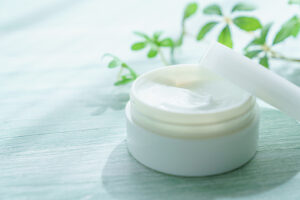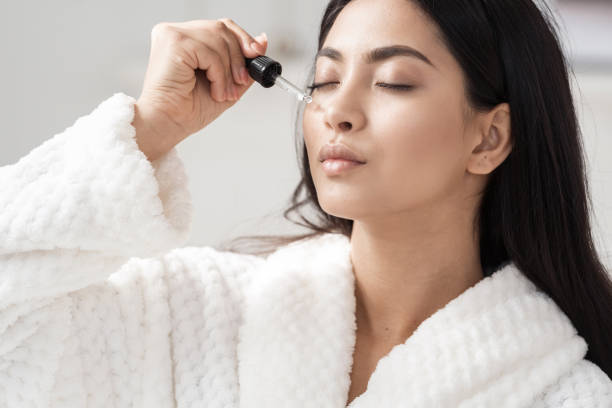Your skincare routine should change as the seasons change. These autumn skincare suggestions will aid in the transition of your skin from summer to autumn.You may notice that your skin changes when the season shifts from summer to October. Consider these autumn skincare suggestions to make the transition from summer to autumn as easy on your skin as possible.
The way our skin feels and appears is heavily influenced by our surroundings. When it’s hot and humid, the extra moisture can make the skin seem oily. When the weather is cold and dry, the skin may feel parched and thirsty for moisture. Other environmental stresses include air pollution, sun exposure, air conditioning, and more.
The environment around us changes as the seasons change. Skin must adjust to the shifting climate conditions, but you can make it a little easier on it by following these fall skincare tips suggestions.
Why Should I Change My Summer Skincare to Fall?
Simply said, you should switch up your skincare routine when your skin requires it.
There are a variety of reasons why you might want to switch out your skincare products: hormonal fluctuations, dryness from age, sensitivity from new skin issues, and so on.
A change in environment or season is a common cause for altering your skincare routine. Consider the typical summer weather: scorching heat, humid air, excessive sun exposure, and plenty of interior air conditioning. Compare this to the general climate conditions in the fall: cooler temperatures, rain, shorter days, more wind, lower humidity levels, and increased indoor heating.
When the temperature and humidity drop, your skin is suddenly exposed to a whole new set of climate variables to defend against. Skin is the body’s largest organ and its first line of defence when it comes to fending off invaders, according to Live Science.
You must take care of your skin barrier all year to maintain it healthy. Your skincare routine should evolve as your surroundings change.
When Should I Make Fall-Friendly Changes to My Skincare Routine?
The change from summer to autumn occurs gradually. As the autumn season approaches, you may notice that the sun sets earlier in the day. You may also notice chilly weather, prompting you to cover up to stay warm. These are some early indicators that it’s time to change your skincare routine in order to prepare your skin for the next fall season.
You can gradually change your skincare routine, much like the seasons. You may need to adjust your skincare routine even sooner if you have sensitive or reactive skin. The changing seasons can be jarring for those with sensitive or reactive skin. Take additional care of your skin before the first sign of fall to lessen the shock.
What Effect Does Fall Weather Have on Skin Health?
The weather in the fall varies depending on where you reside. Fall is essentially a somewhat cooler version of summer for individuals who live in desert settings. Fall is a slightly warmer variant of winter for those who live in frigid climes. Autumn is often cooler and drier than summer, regardless of where you reside. They’re also getting closer to the harsh winter months, so now is the ideal time to pamper your skin.
The following are some of the ways that autumn weather affects skin:
- Cooler temperatures make the skin more prone to dehydration and dryness.
- Wind and rain, for example, aggravate sensitive and reactive skin. More irritation, redness, and inflammation may occur on the skin.
- The fallacy that you don’t need sunscreen in the winter may raise your risk of sunburn and other sun-related health problems.
- Low humidity can aggravate skin disorders such as eczema.
- When the weather is dry, the skin produces more sebum, which leads to more breakouts.
10 Essential Fall Skincare Tips
These autumn skincare suggestions can help you transition your summer skincare routine to fall.
1. Drink plenty of water from the inside out
Autumn weather may be fickle. Is there a chance of rain? Is the sun shining brightly? Is there a breeze? One thing is certain: as summer fades into fall, your skin will require as much hydration as possible.

Your skin’s moisture content decreases when the temperature and humidity levels decrease. This might cause unpleasant dryness. As your skin becomes drier, it produces more sebum to compensate. This results in breakouts.
Hydrate your skin from the inside out to avoid dryness and breakouts. This include drinking more water, eating hydrating foods, purchasing a humidifier, and applying hydrating serums and moisturisers. According to Verywell Health, look for humectant substances that attract water like a magnet. Humectants include hyaluronic acid and glycerin.
2. Use Thick Creams instead of Light Moisturizers
When it comes to moisturiser, less is more in the summer. Because it’s the wettest season, the air contains more moisture, keeping skin dewy and glowing. As the fall months approach, it’s time to switch to a thick face cream that hydrates while also acting as a barrier between skin and the environment.

Now is the moment to make emollient and occlusive substances your best friends. Emollients soften the skin, making it less prone to dryness and roughness, according to Healthline. Mineral Oil, Shea Butter, Petroleum, Ceramides, and Fatty Acids are examples of emollients.
Because emollients and occlusives have a lot in common, a lot of emollients are also occlusives. Occlusives include the following, according to Harvard Health: Squalene, Beeswax, Lanolin, Petrolatum, and Paraffin are some of the ingredients used in cosmetics. It’s their responsibility to create a seal around the skin to keep the water out.
3.Apply sunscreen frequently
Wear sunscreen every day, according to the American Academy of Dermatology. SPF products should be used whenever you will be outside.

Even if it’s windy, snowy, or raining, you’ll need SPF since sunshine penetrates cloudy skies and bounces off water. Yes, sunscreen is required in the fall. Sunburns and free radical damage, which promotes skin ageing, will be avoided.
4.Use Exfoliators to cool it down
AHAs and BHAs are exfoliating chemicals that can be harsh on the skin. They have a lot of advantages, but they can also cause sensitivity, inflammation, and redness. It may be appropriate to minimise your use of chemical exfoliators and other strong active ingredients during the fall months, when the skin is already changing.
This is the time to take a vacation from harsh treatments and concentrate on hydrating and protecting your skin. You can use a light exfoliant 1-2 times per week if you want to, but don’t overdo it.
5.Lips, too, require attention
Chapped lips are one of the first skin-related symptoms that many individuals feel as the seasons change. Take care of your lips sooner rather than later to avoid dry, cracked lips. Always keep a lip balm in your purse or pocket and use it throughout the day. This will not only hydrate your lips, but many lip balms also contain protective substances that create a seal on the lips. On cool, dry, and windy fall days, this will come in useful.
Advice? Because lips require UV protection as well, look for a lip balm with SPF.
6.You Must Use Body Lotion
Skincare regimes are frequently focused on the face, but don’t overlook the importance of body care. It’s probably time to get a body lotion as the hot summer days shift into cool fall days.

When you get out of the shower, the best time to apply body moisturiser is right away. Apply a large amount of body lotion to your skin while it is still damp. This will assist keep the moisture in, preventing dry hands, elbows, knees, and feet in the fall.
7.Stay away from skin-drying ingredients
Applying skin-stripping chemicals is the last thing you want to do to your skin in the fall. These will remove any remaining moisture from your skin, making it more susceptible to dryness and dehydration. Ingredients that strip the skin, such as scent and alcohol, should be avoided. Avoiding skin-stripping substances can be as simple as looking for cosmetics that are safe for sensitive skin.
8.Wash your face with a hydrating cleanser
A good cleanser should remove debris, excess oil, and even dead skin cells from the skin. You don’t want to get rid of all of your skin’s natural oils during the chilly fall months. These keep the skin hydrated.

It’s possible that your cleanser is overly effective if it makes your skin feel tight, dry, and irritated. Look for a moisturising cleanser that is mild. Foaming cleansers should be avoided because they are drying. Instead, for a burst of hydration at the start of your fall skincare routine, use a cream cleanser or an oil-based cleanser.
9.Embrace Facial Oils
In the summer, facial oils can make your skin feel oily and heavy, but here is your reminder to use them in the fall. This is an excellent approach to re-establish moisture equilibrium during the otherwise dry months. Meadowfoam Oil, Rosehip Oil, Squalane Oil, and Sea Buckthorn Oil are some of the best face oils for the fall. Antioxidants, anti-inflammatory effects, and moisture content are abundant in these oils.
10. Use Caution When Working With Irritating Ingredients
As summer turns to fall, people with sensitive skin, reactive skin, and skin diseases like eczema often experience irritation and flare-ups. Avoiding irritating components is one method to decrease skin irritation in the fall. Fragrance, alcohol, strong acids, sulphates, and essential oils are some of the substances that can irritate people depending on their level of sensitivity. If you have sensitive skin, test new products on a patch first and then gradually introduce them to avoid irritation.
Making Changes to Your Fall Skincare Routine
Your skincare routine should not cause you any anxiety. You can keep it basic with only a cleanser, moisturiser, and sunscreen, or you can go all out with a multi-step skincare programme. Skincare is a form of self-care for many people. Others use it as a prophylactic step to keep wrinkles and pimples at bay.
Don’t allow the colder months prevent you from achieving your skincare objectives. Hydration, nourishment, prevention, and protection should be the cornerstone of your skincare routine. You should be fine if you follow these fall skin care suggestions.





